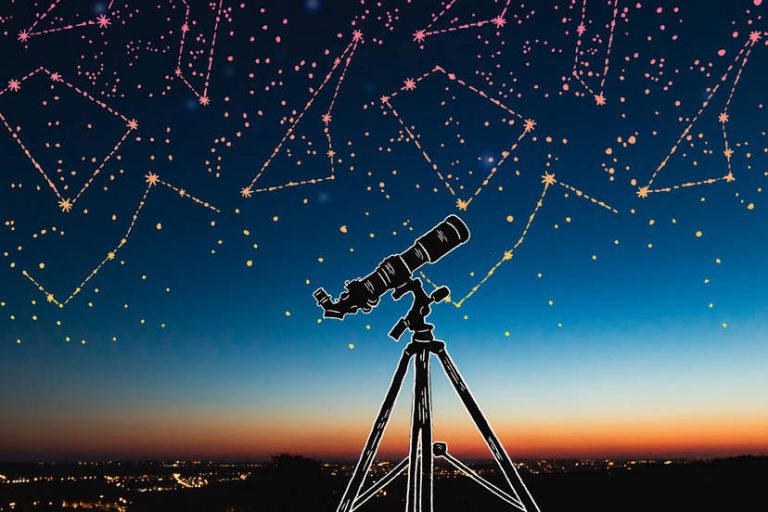Parenting(Age 5 to 8) | Academic | General | Parenting(Age 9 to 12) | Parenting(Age 13 to 16) | Dec 23, 2021
Everything You Need To Know About The Telescopes

The first person on earth to revolutionize astronomy by studying extraterrestrial bodies in the early 17th century was Galileo Gallie. He used an instrument called a telescope which helped him in finding many new discoveries.
A telescope is a device that is used to see magnified images of distant objects. Without a question, the telescope is the most significant investigative instrument in astronomy. It allows for the collection and analysis of radiation from celestial objects, even those in the furthest regions of the cosmos. Today, the word telescope refers to a wide range of devices capable of detecting different parts of the electromagnetic spectrum, as well as other types of detectors in some cases. There are various types of telescopes that we are going to discuss are given below-
- Optical telescope
An optical telescope is a type of telescope that collects and focuses light mostly from the visible region of the electromagnetic spectrum (although some work in infra-red and ultraviolet). The apparent angular size and brightness of distant objects are increased with optical telescopes. In astronomy, optical telescopes are used with non-astronomical equipment such as theodolites (including transits), spotting scopes, monocular, binoculars, camera lenses, and spyglasses. Reflecting and refracting telescopes are the two most common types of telescopes.
- Radio telescope
Radio telescopes are plugged into radio antennas that capture radio waves using a wide dish. The dishes are occasionally made of conductive wire mesh with apertures that are smaller than the wavelength being measured. Microwave radiation, which may penetrate through the atmosphere and interstellar gas and dust clouds, is also collected using radio telescopes. Some radio telescopes are used to seek alien life by groups such as SETI and the Arecibo Observatory.
- Gamma-ray telescope
Increased energy X-ray and Gamma-ray telescopes do not focus entirely and instead utilize coded aperture masks: the patterns of the shadows created by the mask may be reconstructed to make a picture. Because the Earth's atmosphere is opaque to this section of the electromagnetic spectrum, X-ray and Gamma-ray telescopes are often placed on Earth-orbiting satellites or high-flying balloons. The Fermi Gamma-ray Space Telescope is an example of a Gamma-ray telescope. VERITAS is an example of such a telescope.
- Other types of telescope
- Cosmic-ray telescopes detect cosmic rays and are often made up of a vast array of different detector types scattered across a large region.
- Energetic neutral atom devices detect fast-moving electrically neutral atoms generated by the solar wind to study the magnetosphere of various planets.
- Neutrino detectors, or neutrino telescopes, are employed in neutrino astronomy. They are made up of a massive quantity of water and ice that is surrounded by an array of photo-multiplier tubes, which are sensitive light detectors. The origin of neutrinos is identified by reconstructing the path of secondary particles dispersed by neutrino hits because of their contact with various detectors.
- Gravitational-wave detectors, which are analogous to gravitational wave telescopes, are employed in gravitational-wave astronomy. Gravitational waves are discovered by extraordinarily accurate measurements of the change in length of huge earth-bound objects generated by intense collisions in space.
Want access to expert academic guidance — for free? When you create your free Vnaya account, you will have an option to ask a Question, Book a Demo session, talk to our Academic Experts, and get Professional Parenting Support —all for Free! Our Academic Counselor will help you learn how to improve your academic performance by assessing your learning style and curating a personalized lesson plan for you!
Sign up for your Vnaya account today to get a boost on your academic quest.
















Post a Comment: